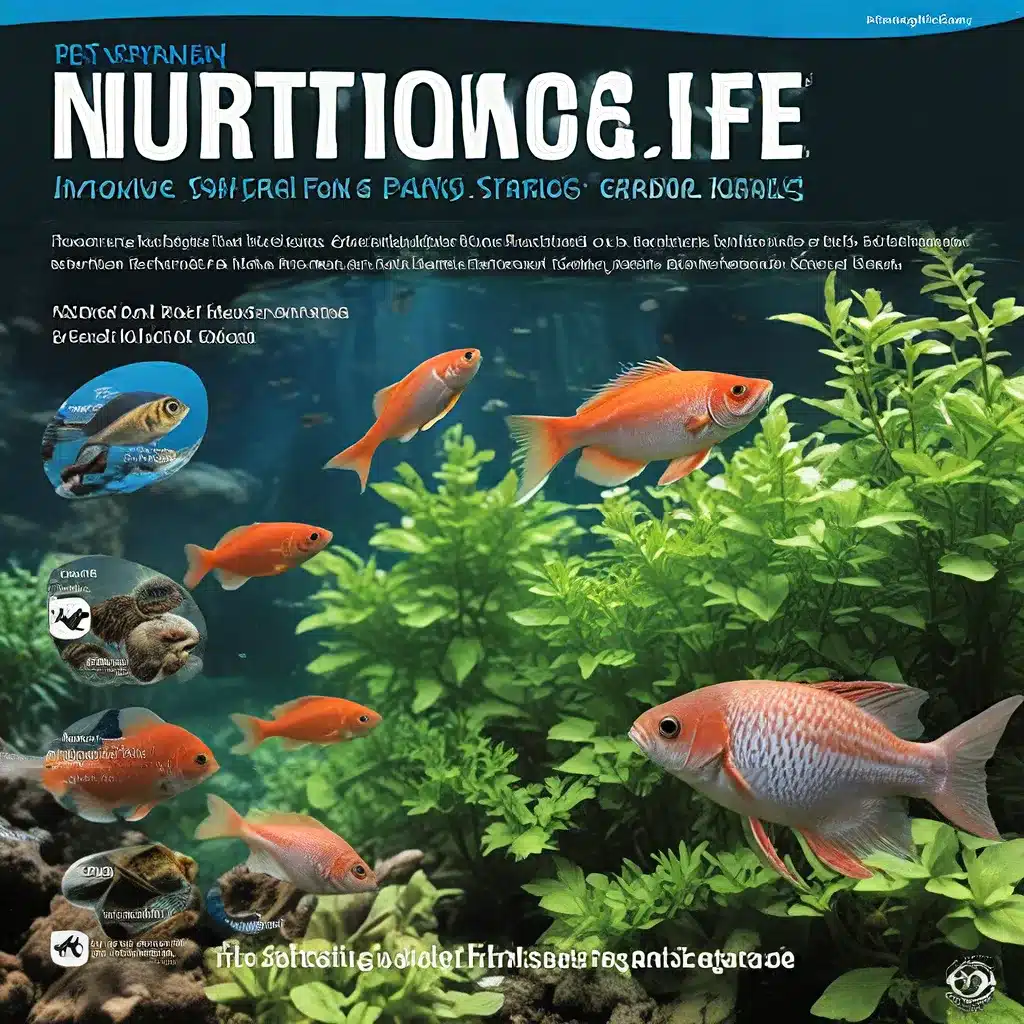
Mastering the Aquatic Ecosystem: Balancing Nutritional Needs
Maintaining a thriving aquarium ecosystem requires a delicate balance between the nutritional needs of your fish and aquatic plants. In this comprehensive guide, we’ll explore innovative feeding strategies that cater to the diverse requirements of your aquatic inhabitants, ensuring a harmonious and sustainable environment.
Understanding Fish Feeding Habits
Fish have unique dietary preferences and feeding behaviors that must be considered when crafting an optimal feeding regimen. King Aquarium recommends researching the specific needs of your fish species, as this will guide you in selecting the appropriate food types and quantities. Some fish, such as herbivores, thrive on a plant-based diet, while carnivores require a protein-rich menu. Omnivorous fish may benefit from a balanced blend of both plant and animal-based nutrients.
Observing your fish’s natural feeding patterns can also provide valuable insights. Some species prefer to graze throughout the day, while others may exhibit more distinct feeding periods. Tailoring your feeding schedule to their natural behaviors can enhance their overall health and well-being.
Diversifying the Plant-Based Diet
Aquatic plants play a crucial role in maintaining water quality and providing essential nutrients for herbivorous and omnivorous fish. Incorporating a variety of submerged, floating, and marginal plants can create a thriving, self-sustaining ecosystem.
When selecting plants for your aquarium, prioritize species that are native to the region or closely match the natural environment of your fish. This not only supports their nutritional needs but also promotes a more authentic, visually appealing aquascape. Nurture Native Nature emphasizes the importance of choosing plants that are well-suited to your specific climate and water parameters.
Incorporating a variety of plant types can also mimic the natural diversity found in aquatic habitats. Submerged plants such as hornwort and waterweed provide oxygen and absorb excess nutrients, while floating plants like frogbit and water hyacinth offer shade and protection for smaller fish. Marginal plants, growing along the water’s edge, can introduce additional visual interest and serve as a natural filtration system.
Balancing Supplementary Feeding
While a diverse plant-based diet is essential, supplementary feeding may be necessary to meet the nutritional needs of your aquarium inhabitants. Carefully selecting high-quality fish and invertebrate food can enhance the overall health and vitality of your aquatic community.
When choosing supplementary feeds, consider the specific dietary requirements of your fish species, such as their preference for flakes, pellets, or frozen/freeze-dried foods. Avoid overfeeding, as this can lead to water quality issues and promote the growth of harmful algae.
In addition to traditional fish foods, you can also explore innovative feeding strategies, such as:
- Live Foods: Introducing live prey, such as brine shrimp, daphnia, or bloodworms, can stimulate natural hunting behaviors and provide a more diverse nutritional profile.
- Homemade Diets: Preparing your own fish food using a blend of high-quality ingredients can ensure your aquarium residents receive a tailored and nutritious meal.
- Feeding Stations: Utilizing dedicated feeding stations or platforms can help regulate portion sizes and prevent overfeeding, while also creating engaging interactive experiences for your fish.
Optimizing Water Quality for Nutrient Cycling
Maintaining optimal water quality is paramount for the health and growth of both your fish and aquatic plants. A well-balanced nutrient cycling system ensures that essential elements, such as nitrogen, phosphorus, and carbon, are readily available for your aquatic inhabitants.
Incorporating a robust filtration system is crucial in this process. Mechanical, biological, and chemical filtration work together to remove waste, control algae growth, and maintain ideal water parameters. Regular water testing and partial water changes can further optimize the nutrient balance and pH levels in your aquarium.
By understanding the complex interplay between fish, plants, and water quality, you can develop a comprehensive feeding strategy that supports the entire aquatic ecosystem. This holistic approach will not only enhance the visual appeal of your aquarium but also contribute to the long-term well-being of your aquatic life.
Incorporating Sustainable Aquascaping Practices
Aquascaping, the art of designing and maintaining visually stunning aquatic landscapes, can also play a role in your feeding strategies. By incorporating sustainable aquascaping techniques, you can create an environment that naturally supports the nutritional needs of your fish and plants.
NOAA’s research on oyster reef habitats highlights the importance of incorporating diverse and functional elements within an aquatic ecosystem. Incorporating features such as submerged branches, rock formations, and aquatic vegetation can provide natural shelter, breeding grounds, and nutrient sources for your aquarium inhabitants.
Furthermore, adopting a holistic approach to aquascaping can minimize the need for extensive supplementary feeding. By prioritizing the use of native plants, you can create a self-sustaining system where the aquatic flora and fauna thrive in harmony, reducing the reliance on external food sources.
Conclusion: Embracing the Aquatic Ecosystem
Nurturing a thriving aquarium requires a comprehensive understanding of fish feeding habits, plant-based nutrition, and water quality management. By implementing innovative feeding strategies and sustainable aquascaping practices, you can cultivate a vibrant and self-sustaining aquatic ecosystem that supports the diverse needs of your aquarium inhabitants.
Remember, the key to success lies in striking a delicate balance between the various components of your aquarium. With dedication, patience, and a commitment to continuous learning, you can create a captivating underwater oasis that inspires and delights aquarists of all skill levels.

